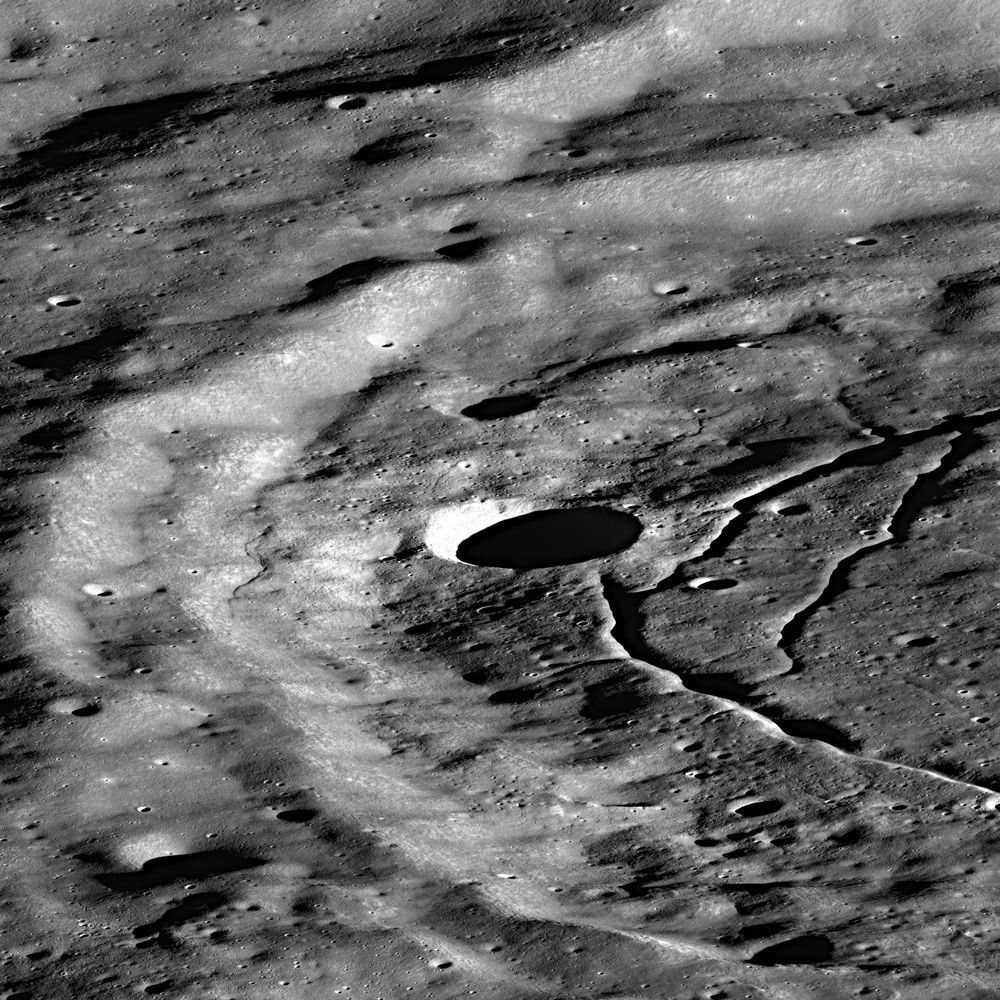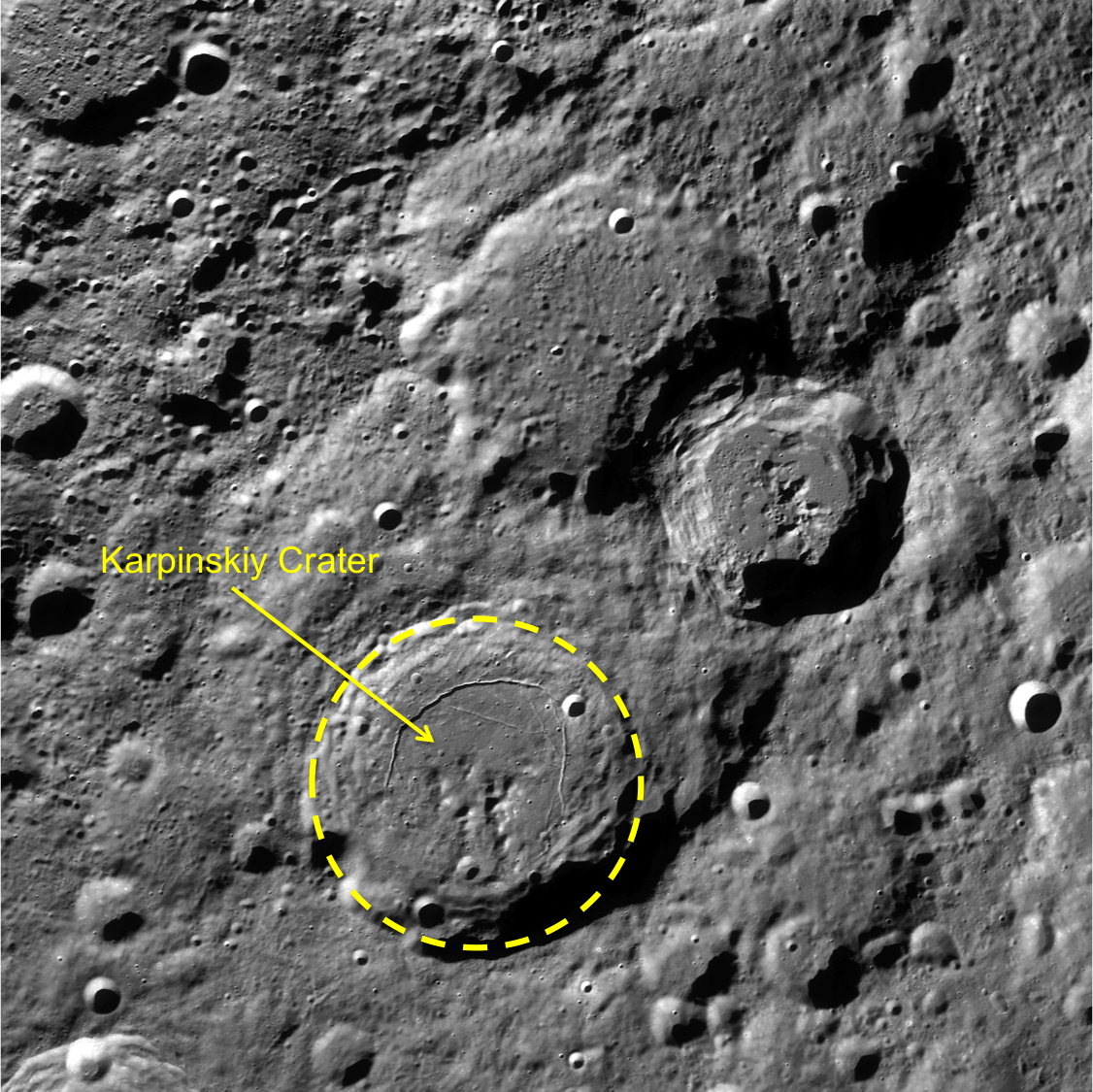
Today’s Featured Image is an oblique image of the northeastern rim of Karpinskiy crater, a floor-fractured crater centered at 72.609°N and 166.801°E. We can see wall terraces, superimposed impact craters of many sizes, and floor fractures. Fractures on the Moon are observed in different places. They can be seen as long linear rilles formed as the crust is pulled apart, and inside of craters, like in today’s Featured Image. How do these fractures inside the crater form? Lunar geologists propose two major formation mechanisms for crater floor fractures: intrusive magmatic activity and viscous relaxation. Intrusive magmatic activity is the process by which magma rises beneath the crater floor, causing excess pressure to build up, pushing the crater floor up; this extension causes it to crack. Viscous relaxation occurs as the lunar crust attempts to reach isostatic equilibrium, which it lost during excavation of large amounts of material during the impact. The the original curved floor flattens and is pushed up, causing it to fracture.
Gain an astronaut's eye view of Karpinskiy crater with the oblique NAC image!
Related posts:
Published by Raquel Nuno on 22 August 2013
